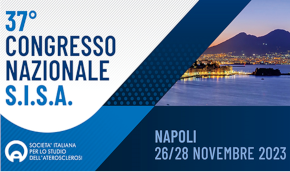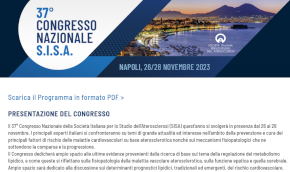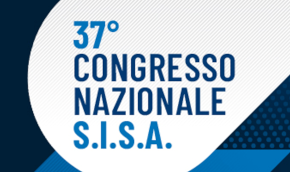 Rivista in lingua italiana
Rivista in lingua italiana
riservata ai Soci SISA
Ultimo numero:
Anno 14 • N.4/2023
Abstract
Extended-release niacin or ezetimibe and carotid intima-media thickness
Taylor AJ, Villines TC, Stanek EJ, Devine PJ, Griffen L, Miller M, Weissman NJ, Turco M.
N Engl J Med 2009;361:2113-22
BACKGROUND: Treatment added to statin monotherapy to further modify the lipid profile may include combination therapy to either raise the high-density lipoprotein (HDL) cholesterol level or further lower the low-density lipoprotein (LDL) cholesterol level. METHODS: We enrolled patients who had coronary heart disease or a coronary heart disease risk equivalent, who were receiving long-term statin therapy, and in whom an LDL cholesterol level under 100 mg per deciliter (2.6 mmol per liter) and an HDL cholesterol level under 50 mg per deciliter for men or 55 mg per deciliter for women (1.3 or 1.4 mmol per liter, respectively) had been achieved. The patients were randomly assigned to receive extended-release niacin (target dose, 2000 mg per day) or ezetimibe (10 mg per day). The primary end point was the between-group difference in the change from baseline in the mean common carotid intima-media thickness after 14 months. The trial was terminated early, on the basis of efficacy, according to a prespecified analysis conducted after 208 patients had completed the trial. RESULTS: The mean HDL cholesterol level in the niacin group increased by 18.4% over the 14-month study period, to 50 mg per deciliter (P < 0.001), and the mean LDL cholesterol level in the ezetimibe group decreased by 19.2%, to 66 mg per deciliter (1.7 mmol per liter) (P < 0.001). Niacin therapy significantly reduced LDL cholesterol and triglyceride levels; ezetimibe reduced the HDL cholesterol and triglyceride levels. As compared with ezetimibe, niacin had greater efficacy regarding the change in mean carotid intima-media thickness over 14 months (P = 0.003), leading to significant reduction of both mean (P = 0.001) and maximal carotid intima-media thickness (P < or = 0.001 for all comparisons). Paradoxically, greater reductions in the LDL cholesterol level in association with ezetimibe were significantly associated with an increase in the carotid intima-media thickness (R = -0.31, P < 0.001). The incidence of major cardiovascular events was lower in the niacin group than in the ezetimibe group (1% vs. 5%, P = 0.04 by the chi-square test). CONCLUSIONS: This comparative-effectiveness trial shows that the use of extended-release niacin causes a significant regression of carotid intima-media thickness when combined with a statin and that niacin is superior to ezetimibe. (ClinicalTrials.gov number, NCT00397657.)

Area Soci
Eventi



 SISA LIPID ACADEMY - Corso avanzato di lipidologia clinica
SISA LIPID ACADEMY - Corso avanzato di lipidologia clinicaModena, 22-23 Giugno 2023
[continua a leggere]Giornale Italiano Arteriosclerosi
HoFH today
 Rivista Italiana della
Rivista Italiana della
Ipercolesterolemia
Familiare Omozigote
Anno 5 • N.1/2023
Rivista NMCD
Diateca
[continua a leggere]
[continua a leggere]
Newsletter
il vostro indirizzo di posta elettronica
Progetto LIPIGEN

Nuovo sito dedicato al Progetto LIPIGEN
Progetto LIPIGEN - Vecchio portale
E' necessario essere loggati come utente
Lipigen per poter accedere alla pagina
PROject Statin Intolerance SISA
PROSISA – PROject Statin Intolerance SISA
E' necessario essere loggati come utente
PROSISA per poter accedere alla pagina
GILA - Lipoprotein Aferesi
Gruppo Interdisciplinare Lipoprotein Aferesi
(Accesso Gruppo GILA-Lipoprotein Aferesi)
E' necessario essere loggati come utente del Gruppo GILA per poter accedere
Gruppo Interdisciplinare Lipoprotein Aferesi
(Documentazione ad accesso libero)
Pagina informativa per medici e pazienti








